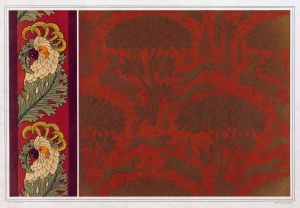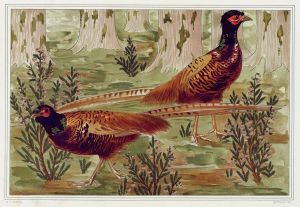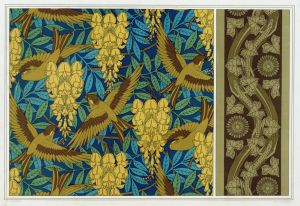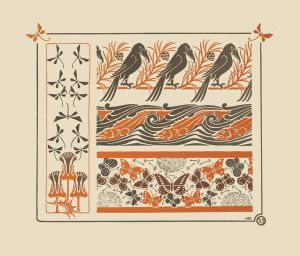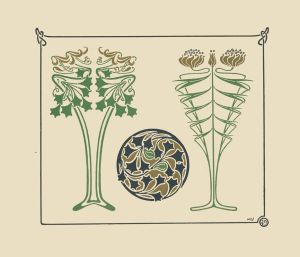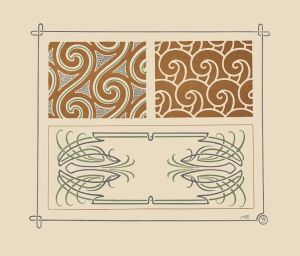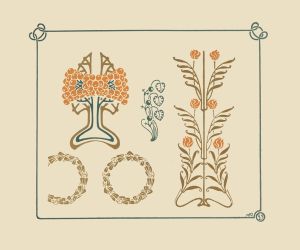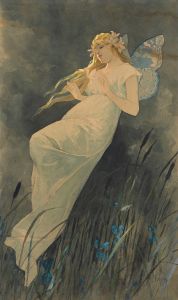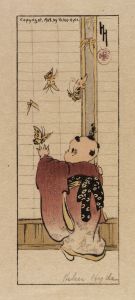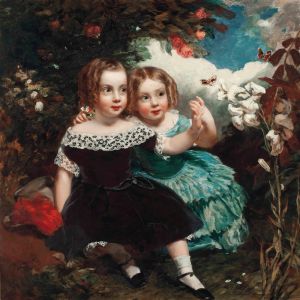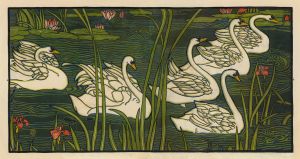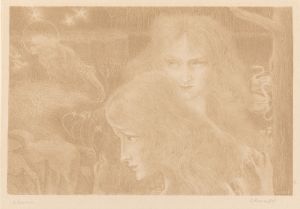
Lucanes et champignons, oxalides et papillons, bordure; cygnes, iris et nénuphars, émail cloisonné
A hand-painted replica of Maurice Pillard Verneuil’s masterpiece Lucanes et champignons, oxalides et papillons, bordure; cygnes, iris et nénuphars, émail cloisonné, meticulously crafted by professional artists to capture the true essence of the original. Each piece is created with museum-quality canvas and rare mineral pigments, carefully painted by experienced artists with delicate brushstrokes and rich, layered colors to perfectly recreate the texture of the original artwork. Unlike machine-printed reproductions, this hand-painted version brings the painting to life, infused with the artist’s emotions and skill in every stroke. Whether for personal collection or home decoration, it instantly elevates the artistic atmosphere of any space.
Maurice Pillard Verneuil (1869–1942) was a French artist and designer known for his contributions to the Art Nouveau movement. He specialized in decorative arts, creating works that often featured natural motifs such as plants, animals, and insects. His designs spanned a variety of mediums, including posters, wallpapers, ceramics, and enamel work. Verneuil's style was characterized by its intricate patterns, vibrant colors, and a strong emphasis on the harmony between art and nature.
One of his notable works, Lucanes et champignons, oxalides et papillons, bordure; cygnes, iris et nénuphars, émail cloisonné, is an example of his mastery in cloisonné enamel. Cloisonné is a decorative technique in which fine metal wires are used to create compartments (cloisons) that are then filled with enamel to produce intricate designs. This piece showcases Verneuil's fascination with the natural world, as it features stag beetles (lucanes), mushrooms (champignons), oxalis flowers (oxalides), butterflies (papillons), swans (cygnes), irises (iris), and water lilies (nénuphars). The work is divided into sections, each highlighting different combinations of these motifs, arranged in a harmonious and decorative manner.
The piece reflects the Art Nouveau movement's emphasis on organic forms and the integration of art into everyday life. Verneuil's use of enamel cloisonné demonstrates his technical skill and his ability to adapt traditional techniques to modern aesthetics. The vibrant colors and detailed patterns in this work exemplify the movement's celebration of nature as a source of artistic inspiration.
While specific details about the creation date or the current location of this particular piece are not readily available, it is consistent with Verneuil's broader body of work, which often drew from his studies of flora and fauna. His designs were influenced by Japanese art, particularly ukiyo-e prints, as well as the works of other Art Nouveau artists such as Eugène Grasset and Alphonse Mucha.
Maurice Pillard Verneuil's contributions to decorative arts have left a lasting legacy, and his works continue to be appreciated for their beauty and craftsmanship. Lucanes et champignons, oxalides et papillons, bordure; cygnes, iris et nénuphars, émail cloisonné stands as a testament to his ability to merge artistic innovation with the timeless beauty of the natural world.





